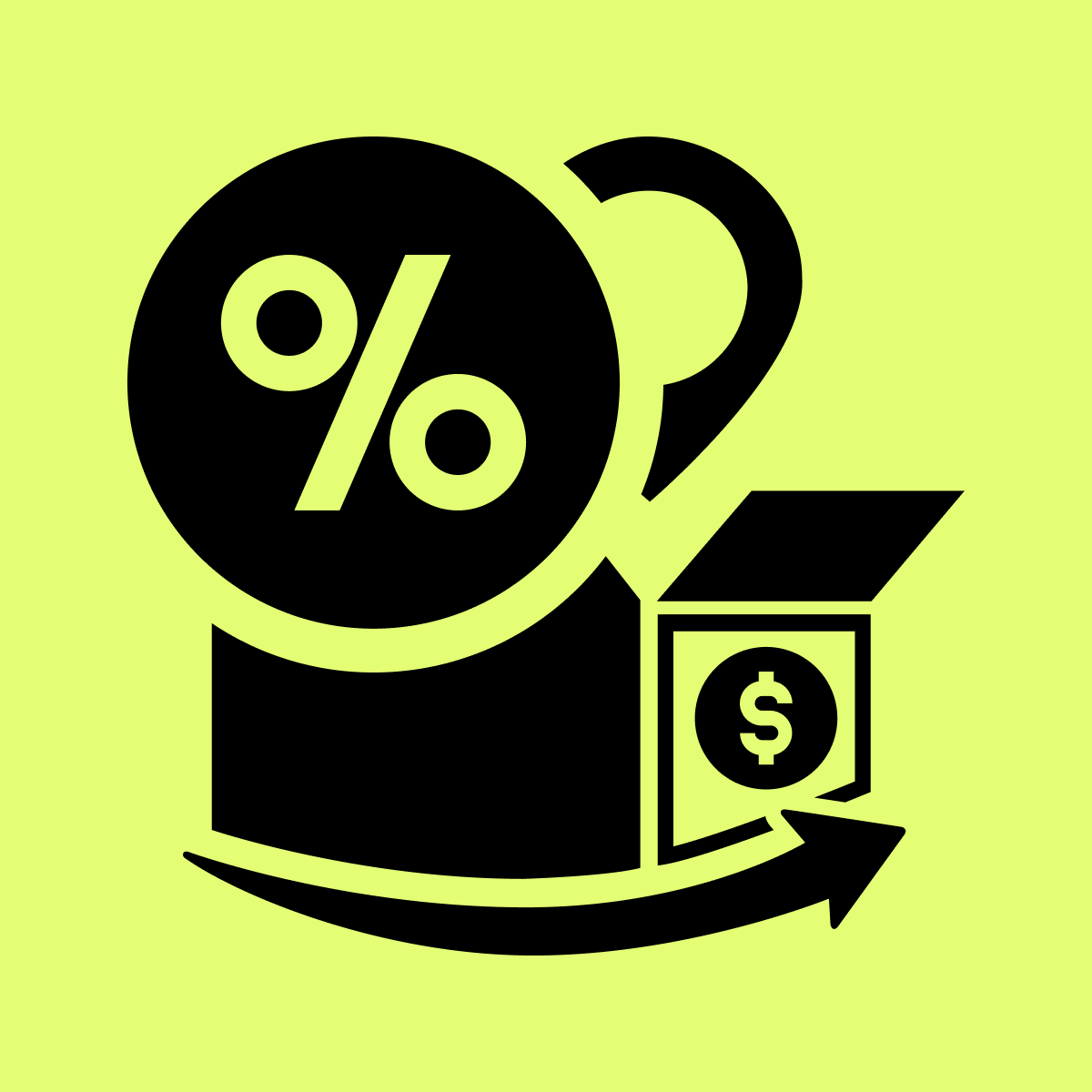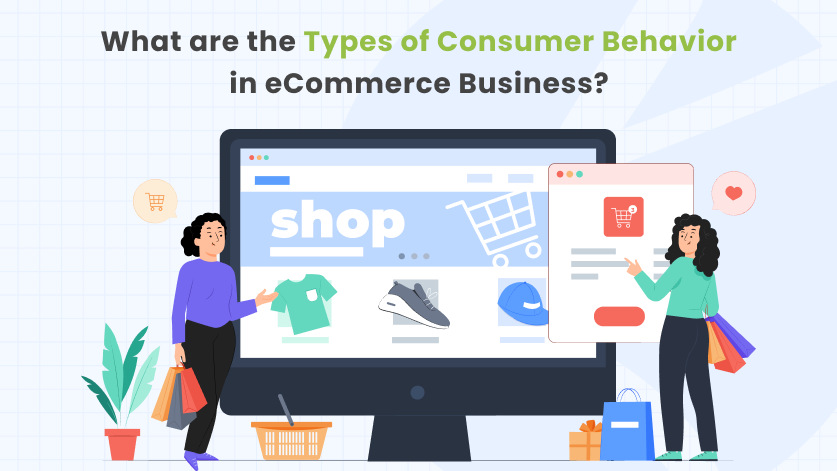In eCommerce business, understanding different types of consumer behaviors is the golden key to success. It allows you to customize your strategies that not only increase sales but also improve customer satisfaction and brand loyalty.
This blog post dives into the importance of consumer behavior for eCommerce businesses and explores the different types of buying behaviors you’ll encounter.
We’ll cover impulsive buyers, habitual buyers, informational buyers, and situational buyers, outlining their characteristics and how you can tailor your eCommerce strategy to effectively reach each group.
We’ll also explore how to analyze and understand these different consumer behaviors to optimize your website, marketing efforts, and product offerings.
By understanding your consumers, you can create a more personalized shopping experience and drive conversions for your eCommerce business.
By the end of this post, you’ll be able to identify the different types of consumer behaviors and develop targeted strategies to turn website visitors into loyal customers.
Understanding the Importance of Consumer Behavior for eCommerce Businesses:
Consumer behavior serves as the compass guiding eCommerce business owners through the vast and ever-changing digital landscape. Here’s a detailed explanation of why understanding consumer behavior is important for success:
1. Knowing Your Target Audience:
- Needs and Wants: What problems are they trying to solve? What features or benefits are most important to them?
- Shopping Habits: Do they research extensively? Are they impulse buyers? What influences their decisions (reviews, social proof, etc.)?
- Preferred Channels: Where do they spend their time online? Do they use social media for product discovery? What devices do they use to shop (mobile, desktop)?
2. Crafting Effective Marketing Strategies:
- Personalization: Customers crave a personalized experience. Understanding behavior allows you to segment your audience and deliver targeted ads, product recommendations, and email campaigns that are relevant to their interests and purchase journeys.
- Optimizing Your Website and User Experience (UX): By knowing how customers navigate your website, what information they seek, and where they encounter friction points, you can optimize the user experience for a smoother buying journey. This can lead to increased conversion rates and customer satisfaction.
- Leveraging the Right Channels: Is your target audience heavily influenced by social media trends? Do they rely on review sites before making purchases? Knowing their preferred channels allows you to allocate your marketing budget strategically for maximum impact.
3. Product Development and Pricing Strategies:
- Developing Products They Want: By analyzing purchase patterns and customer feedback, you can identify gaps in the market and develop products that cater to specific customer needs.
- Setting Competitive Prices: Understanding how much your target audience is willing to pay for certain features and functionalities allows you to set optimal prices that are both profitable and attractive to your customers.
4. Building Customer Loyalty:
- Proactive Customer Service: Knowing potential concerns allows you to provide proactive customer service, addressing issues before they arise and fostering trust.
- Loyalty Programs and Rewards: Understanding purchase habits allows you to create targeted loyalty programs that incentivize repeat purchases and encourage brand advocacy.
- Creating a Community: Consumers today value a sense of belonging. By understanding their interests and needs, you can create a community around your brand, fostering customer loyalty and engagement.
Types of Consumer Behaviour in eCommerce Business:
1. Impulsive Buying Behavior:
Impulsive buying behavior refers to spontaneous, unplanned purchases made by consumers without much deliberation. Let’s explore in deep:
Characteristics of Impulsive Buying Behavior:
Impulsive buyers are often driven by emotions, immediate gratification, and the allure of novelty or temptation. They may be influenced by factors such as limited-time offers, flash sales, or visually appealing product displays.
1. Emotional Decision-Making: Impulsive buyers are often driven by emotions rather than rational thinking. They may experience impulses or urges to buy, influenced by factors such as excitement, desire, or mood elevation.
2. Immediate Gratification: Impulsive buyers seek instant gratification and derive pleasure from the act of purchasing itself, rather than carefully evaluating the utility or necessity of the product. They may prioritize satisfying immediate wants or desires over long-term considerations.
3. Novelty and Temptation: Impulsive buying behavior is often triggered by the allure of novelty, temptation, or curiosity. Consumers may be drawn to products that are visually appealing, unique, or promoted as limited-time offers, creating a sense of urgency to buy.
4. Limited Consideration of Alternatives: Impulsive buyers typically do not engage in extensive research or comparison shopping before making a purchase. Instead, they may make quick decisions based on instinct, intuition, or gut feeling, without thoroughly evaluating alternative options.
5. Spontaneous Purchases: Impulsive buying behavior can manifest in spontaneous purchases, where consumers make unplanned buying decisions in the spur of the moment. These purchases may occur both online and offline, driven by impromptu browsing or exposure to persuasive marketing stimuli.
Impact of Impulsive Buying Behavior on eCommerce:
Understanding impulsive buying behavior allows eCommerce businesses to capitalize on impulse purchases by strategically placing product recommendations, showcasing related items, and creating a sense of urgency through limited-time promotions or deals. Let’s explore in deep:
1. Opportunities for Upselling and Cross-Selling: eCommerce businesses can capitalize on impulsive buying behavior by strategically showcasing related or complementary products during the checkout process. By leveraging suggestive selling techniques, businesses can encourage additional purchases and increase order value.
Learn more about how to upselling and cross-selling on your shopify store?
2. Creating a Sense of Urgency: Limited-time offers, flash sales, and countdown timers can create a sense of urgency and scarcity, triggering impulsive buying behavior among online shoppers. eCommerce businesses can utilize these tactics to prompt immediate action and stimulate impulse purchases.
3. Visual Merchandising and Product Presentation: Visually appealing product displays, high-quality images, and engaging multimedia content can capture the attention of impulsive buyers and entice them to make spontaneous purchases. eCommerce businesses should prioritize optimizing product presentation to stimulate impulse buying behavior.
4. Strategic Placement of Call-to-Action (CTA) Buttons: Placing prominent and strategically positioned call-to-action buttons, such as “Add to Cart” or “Buy Now”, can streamline the purchasing process and facilitate impulsive buying behavior. Clear and compelling CTAs prompt quick decision-making and drive conversions.
2. Habitual Buying Behavior:
Habitual buying behavior involves repetitive purchasing patterns where consumers exhibit loyalty to certain brands or products out of habit or routine.
Characteristics of Habitual Buying Behavior:
Habitual buyers tend to stick to familiar brands or products, often due to convenience, brand loyalty, or perceived consistency in quality. They may be less influenced by external factors such as price fluctuations or marketing efforts. Let’s explore in deep:
1. Brand Loyalty: Habitual buyers develop a strong attachment to specific brands or products and demonstrate consistent purchasing behavior over time. They may prefer familiar brands due to factors such as trust, reliability, and positive past experiences.
2. Routine Purchasing: Habitual buying behavior often involves routine or habitual purchasing patterns, where consumers regularly replenish certain products without actively considering alternative options. These purchases may be ingrained in daily or weekly routines, becoming automatic or subconscious decisions.
3. Minimal Consideration of Alternatives: Habitual buyers tend to exhibit minimal consideration of alternative brands or products when making purchasing decisions. They may default to familiar options without extensively researching or comparing alternatives, relying on past experiences and familiarity.
4. Convenience and Familiarity: Convenience and familiarity play a significant role in habitual buying behavior. Consumers may choose familiar brands or products out of convenience, preferring the ease of purchase and familiarity of the product attributes, packaging, or user experience.
5. Repetitive Consumption Patterns: Habitual buying behavior is characterized by repetitive consumption patterns, where consumers consistently purchase the same products or brands over an extended period. These consumption habits may be influenced by lifestyle preferences, personal preferences, or product efficacy.
Impact of Habitual Buying Behavior on eCommerce:
For eCommerce businesses, building brand loyalty and fostering repeat purchases are key strategies to cater to habitual buyers. Providing seamless shopping experiences, offering loyalty rewards, and maintaining consistent product quality can help to increase customer loyalty and encourage repeat business.
1. Building Brand Loyalty: eCommerce businesses can leverage habitual buying behavior to build brand loyalty and foster long-term relationships with customers. By consistently delivering quality products, exceptional customer service, and personalized experiences, businesses can cultivate trust and loyalty among habitual buyers.
2. Repeat Purchases and Customer Lifetime Value: Habitual buying behavior contributes to repeat purchases and increases customer lifetime value for eCommerce businesses. By retaining loyal customers and encouraging recurring transactions, businesses can drive sustainable revenue growth and profitability.
Learn more about the impact of customer lifetime value on your eCommerce business.
3. Customer Retention Strategies: eCommerce businesses should implement customer retention strategies to nurture and retain habitual buyers. These strategies may include loyalty programs, subscription services, personalized recommendations, and proactive communication to maintain engagement and loyalty.
4. Product Innovation and Differentiation: Understanding habitual buying behavior enables eCommerce businesses to innovate and differentiate their products to meet the evolving needs and preferences of loyal customers. By continuously monitoring consumer feedback, market trends, and competitor offerings, businesses can introduce new features, variants, or improvements to maintain relevance and appeal to habitual buyers.
3. Informational Buying Behavior:
Informational buying behavior involves consumers actively seeking information and conducting research before making a purchase decision.
Characteristics of Informational Buying Behavior:
Informational buyers are thorough in their research, comparing product features, reading reviews, and seeking recommendations from peers or online sources. They value information transparency, credibility, and reliability in their decision-making process.
1. Active Research: Consumers exhibiting informational buying behavior engage in active research and information gathering before making a purchase. They seek out product details, specifications, reviews, and comparisons to make informed decisions.
2. Comparative Analysis: Informational buyers conduct comparative analysis by evaluating multiple options, considering factors such as price, quality, features, and brand reputation. They aim to identify the best possible choice that aligns with their needs and preferences.
3. Trust in Information Sources: Informational buyers place a high value on credible and trustworthy information sources. They rely on reviews, testimonials, expert opinions, and peer recommendations to validate their purchasing decisions and mitigate perceived risks.
4. Decision-Making Process: The decision-making process for informational buyers is often deliberate and methodical. They weigh the pros and cons of each option, assess the relevance of product attributes, and consider the potential benefits and drawbacks before making a final decision.
5. Preference for Transparency: Informational buyers prefer transparency and clarity in product information, pricing, and policies. They appreciate detailed product descriptions, transparent pricing structures, and clear return or refund policies that enhance their confidence and trust in the purchasing process.
Impact of Informational Buying Behavior on eCommerce:
eCommerce businesses can cater to informational buyers by providing comprehensive product descriptions, user-generated reviews, comparison tools, and educational content. Building trust through transparent communication and offering valuable insights can influence informational buyers and drive conversions.
1. Content Marketing and Educational Resources: eCommerce businesses can cater to informational buyers by providing valuable content and educational resources that address their research needs and questions. Blog posts, buying guides, video tutorials, and product demonstrations serve to inform and empower consumers in their decision-making process.
2. Optimized Product Descriptions and Specifications: Detailed and comprehensive product descriptions, accompanied by high-quality images and videos, cater to the information needs of buyers. eCommerce businesses should provide accurate and detailed specifications, dimensions, materials, and usage instructions to facilitate informed decision-making.
3. User-Generated Content and Reviews: User-generated content, including reviews, ratings, and testimonials, plays a crucial role in influencing informational buyers. eCommerce businesses should actively encourage and showcase customer feedback to build trust and credibility, addressing common concerns and uncertainties.
4. Comparison Tools and Features: eCommerce platforms can integrate comparison tools and features that allow consumers to compare multiple products side by side. These tools enable informational buyers to evaluate product attributes, pricing, and reviews, facilitating a more informed and confident decision-making process.
5. Responsive Customer Support: Responsive and knowledgeable customer support enhances the shopping experience for informational buyers. eCommerce businesses should provide multiple channels for customer inquiries, such as live chat, email, and phone support, and ensure prompt responses to address any questions or concerns.
4. Situational Buying Behavior:
Situational buying behavior is influenced by specific circumstances or external factors that affect consumer purchasing decisions.
Characteristics of Situational Buying Behavior:
Situational buyers’ purchasing decisions may be influenced by factors such as time constraints, urgency, budget constraints, or situational needs. They may exhibit varying buying behaviors based on different contexts or occasions.
1. Contextual Influences: Situational buying behavior is shaped by the context or situation in which the consumer finds themselves. Factors such as time of day, location, occasion, or immediate needs can influence purchasing decisions.
2. Urgency or Time Sensitivity: Situational buyers may experience a sense of urgency or time sensitivity in their purchasing decisions. They may need to make a purchase quickly due to time constraints, impending deadlines, or limited availability of products.
3. Budget Constraints: Budgetary considerations play a significant role in situational buying behavior. Consumers may adjust their purchasing decisions based on financial constraints or the availability of funds at a given time.
4. Situational Needs: Situational buyers prioritize purchases based on immediate needs or specific circumstances. They may seek solutions to problems or challenges they encounter in their daily lives, addressing issues as they arise.
5. Impulse or Opportunistic Purchases: Situational buying behavior can lead to impulse or opportunistic purchases, where consumers seize opportunities or respond to stimuli in the environment. These purchases may occur spontaneously, driven by situational factors or external cues.
Impact of Situational Buying Behavior on eCommerce:
eCommerce businesses can adapt their strategies to accommodate situational buyers by offering flexible payment options, expedited shipping for urgent needs, targeted promotions during special occasions, and personalized recommendations based on browsing or purchase history.
1. Timely Promotions and Offers: eCommerce businesses can leverage situational buying behavior by offering timely promotions and discounts that align with situational needs or occasions. Targeted marketing campaigns can capitalize on specific events, holidays, or seasonal trends to drive sales and engagement.
2. Flexible Payment Options: Providing flexible payment options, such as installment plans or buy now, pay later schemes, accommodates consumers facing budget constraints or financial limitations. eCommerce businesses can tailor payment solutions to meet the needs of situational buyers and facilitate purchase decisions.
3. Express or Expedited Shipping: Situational buyers may prioritize speed and convenience in their purchasing decisions, particularly when facing time-sensitive needs or urgent requirements. Offering express or expedited shipping options ensures timely delivery and enhances the shopping experience for these customers.
4. Dynamic Pricing Strategies: eCommerce businesses can implement dynamic pricing strategies that adjust prices in real-time based on demand, inventory levels, or situational factors. Dynamic pricing allows businesses to optimize revenue and maximize profitability while catering to the preferences and constraints of situational buyers.
5. Personalized Recommendations: Utilizing data-driven insights and predictive analytics, eCommerce platforms can deliver personalized product recommendations tailored to the situational needs and preferences of individual customers. Personalization enhances relevance and increases the likelihood of conversion for situational buyers.
How to Analyze and Understand Types of Consumer Behavior:
Analyzing and understanding the various types of consumer behavior is essential for eCommerce businesses to develop effective strategies, personalize experiences, and drive conversions.
Let’s explore how to analyze and understand different types of consumer behavior:
1. Data Collection: Start by collecting relevant data on consumer behavior through various channels, including website analytics, customer surveys, social media interactions, and sales data. Gather information on browsing behavior, purchase history, demographics, preferences, and feedback to gain insights into consumer motivations and patterns.
2. Segmentation: Divide your target audience into distinct segments based on common characteristics, behaviors, or needs. Use segmentation criteria such as demographics, psychographics, purchase frequency, or product preferences to identify groups with similar traits. This segmentation allows for more targeted analysis and personalized marketing strategies.
3. A/B Testing: Conduct A/B testing experiments to evaluate the impact of different variables, such as website design, pricing strategies, product recommendations, or promotional offers, on consumer behavior. Test hypotheses, measure results, and iterate strategies based on data-driven insights to optimize performance.
4. Behavioral Analysis: Conduct in-depth behavioral analysis to understand how consumers interact with your eCommerce platform at different stages of the customer journey. Analyze browsing behavior, click-through rates, time spent on pages, cart abandonment rates, and conversion paths to identify patterns and areas for improvement.
5. Surveys and Feedback: Gather direct feedback from customers through surveys, interviews, or feedback forms to gain insights into their preferences, motivations, and pain points. Ask specific questions about their shopping habits, satisfaction levels, product preferences, and suggestions for improvement to inform decision-making.
6. Social Listening: Monitor social media channels, forums, review websites, and online communities to listen to conversations and feedback related to your brand, products, and industry. Pay attention to sentiment analysis, trends, and customer sentiments to identify emerging issues, opportunities, and areas for engagement.
Learn more about social media for eCommerce the ultimate guide to success.
7. Competitive Analysis: Analyze the behavior of competitors and industry peers to benchmark performance, identify best practices, and uncover opportunities for differentiation. Study their marketing strategies, pricing tactics, product offerings, and customer engagement initiatives to gain competitive insights.
8. Predictive Analytics: Utilize predictive analytics techniques to forecast future consumer behavior based on historical data, trends, and predictive models. Predictive analytics can help anticipate customer needs, identify potential churn risks, and optimize marketing campaigns for better targeting and effectiveness.
Conclusion:
In conclusion, understanding consumer behavior is paramount for success in the eCommerce business.
By delving into the intricacies of different types of consumer behaviors such as impulsive, habitual, informational, and situational, businesses can customize their strategies to meet the diverse needs and preferences of their target audience.
Recognizing the importance of consumer behavior enables eCommerce businesses to refine their marketing efforts, optimize their website user experience, develop relevant product offerings, and build lasting customer relationships.
Whether it’s leveraging impulsive tendencies to drive spontaneous purchases, nurturing brand loyalty among habitual buyers, providing comprehensive information for informed decisions, or catering to situational needs, a deep understanding of consumer behavior serves as the cornerstone of effective eCommerce strategies.
Through data-driven analysis, segmentation, A/B testing, and continuous monitoring of consumer feedback and market trends, businesses can stay agile and responsive, adapting their approach to evolving consumer preferences and behaviors.
By prioritizing personalized experiences, proactive customer service, and strategic engagement across various channels, eCommerce brands can create a competitive edge, driving conversions, fostering loyalty, and ultimately achieving long-term success in the dynamic digital landscape.








